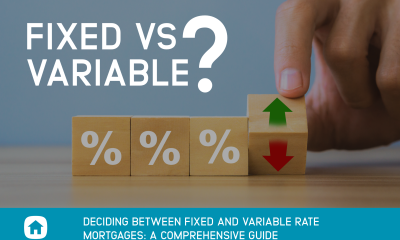Humans make decisions about risk management every day. We decide whether or not to take that new job; we buy life insurance to protect our families in the event of an untimely death, and we even gauge whether or not to wear a raincoat if the sky is looking cloudy. We make many of these decisions unconsciously or automatically, but they are all designed to protect us from the unexpected.
When it comes to your mortgage, planning for the worst-case scenario like job loss or rising interest rates is important. It’s so important that the process even has a name.
It’s called a stress test.
Stress testing your mortgage makes good financial sense, and as of January 2018, has become a mandatory part of applying for a mortgage in Canada.
Stress testing your mortgage is especially important in the present financial climate because interest rates could be on the rise in Canada.
Although In the past year, the Bank of Canada kept their key interest rate steady, it sits right now at 1.75%, they have been threatening to increase it.
If you’re shopping for a home, it’s important to make sure that you can still afford your mortgage if interest rates start to rise, and this should be a key part of how you determine your overall budget.
In January 2018, the Office of the Superintendent of Financial Institutions (OSFI) instituted several new mortgage rules requiring both homebuyers with less than a 20% down payment (known as high-ratio mortgages) and those with a 20% down payment or more (uninsured mortgages) to stress test their mortgages.
The stress test requires homebuyers to qualify for a mortgage interest rate that is higher than the rate they’ll end up actually getting.
Previously, this test was required only for high-ratio mortgages, but these new regulations extended the test to all mortgages.
The stress test requires you to qualify for the greater of either the Bank of Canada’s qualifying rate (currently 5.19%) or the contracted rate plus two percentage points.
That means if you obtain a five-year fixed mortgage at a rate of 3.09%, you’ll need to qualify for that mortgage at the Bank of Canada’s qualifying rate (5.19%) because that is greater than the contracted rate plus two percentage points (5.09%).
Stress Tests Result in Decreased Buying Power
The biggest effect the new mortgage stress tests will have on your home buying process is that it will decrease your buying power by about 20%.
The higher qualifying rate will limit your maximum purchase price even if you could comfortably carry the mortgage at today’s mortgage rates.
But this decreased buying power isn’t necessarily a bad thing.
After all, interest rates are on the rise, and buying too much house could make you vulnerable. If you obtain a variable rate mortgage, you’ll feel the pinch of higher interest rates right away because your mortgage rate is tied to the prime rate. But even if you have a fixed rate mortgage that won’t increase until the term expires, you’ll still feel the squeeze of higher interest rates eventually.
Embracing the Mortgage Stress Test
The best way to handle the new mortgage rules is to embrace them. These rules are in place to protect you, so here’s what you should do to make sure you pass your stress test, and what to do if you fail.
The best way to ensure you pass the stress test is to do one yourself or have your ClearHome mortgage broker walk you through the process to give you a clear idea of how much home you can afford. Instead of using today’s best mortgage rate, your ClearHome mortgage broker will use the Bank of Canada’s qualifying rate of 5.19% in their affordability calculations. By ensuring you can comfortably afford your mortgage payment at higher rates, you’ll protect yourself at renewal time.
If You Fail Your Mortgage Stress Test
If you’ve already found your dream home and made an offer, you’ll have to do the stress test when applying for your mortgage. In this case, your ClearHome mortgage broker will help you determine if you pass the stress test requirements. If you don’t pass, you have two options:
First, you could increase your home down payment. Increasing your down payment will decrease your overall mortgage burden and payments, and will help you qualify for your mortgage at the higher stress test rates. Increasing your down payment size would require additional funds, either from your savings, a gift from family, or through programs like the Home Buyer’s Plan.
If increasing your down payment is not an option, you’ll have to decrease your purchase price. You could do this by either making a new offer to the seller or, depending on the market; you may have to walk away from the home and begin your search again with a new maximum purchase price in mind.
The mortgage stress test rules may seem restrictive to your homebuying journey, but keep in mind that they are in place to protect you from a vulnerable financial situation down the road. So, use the rules to your advantage. Make sure you know in advance how much home you can afford, and take comfort in the knowledge that you’ll be able to make your mortgage payments even when interest rates rise.

 Buying a Home5 years ago
Buying a Home5 years ago
 Credit6 years ago
Credit6 years ago
 Business4 years ago
Business4 years ago
 5 Mortgage Secrets7 years ago
5 Mortgage Secrets7 years ago
 Buying a Home6 years ago
Buying a Home6 years ago
 5 Mortgage Secrets6 years ago
5 Mortgage Secrets6 years ago
 News12 months ago
News12 months ago
 Business4 years ago
Business4 years ago





